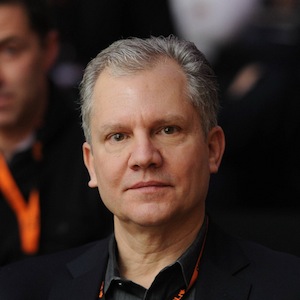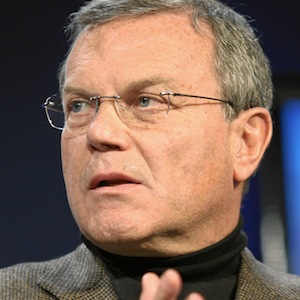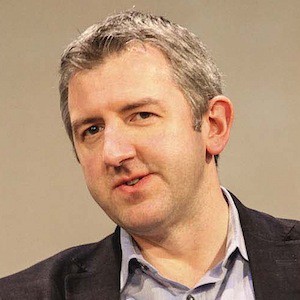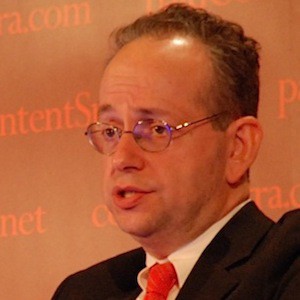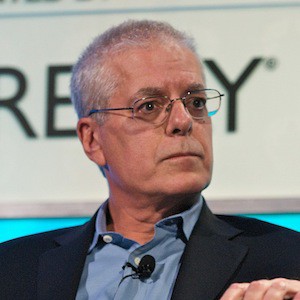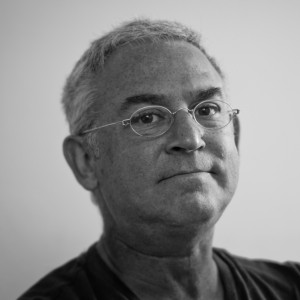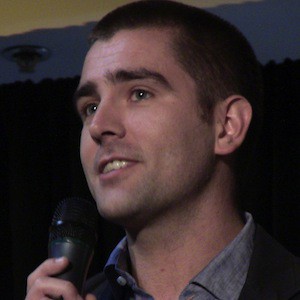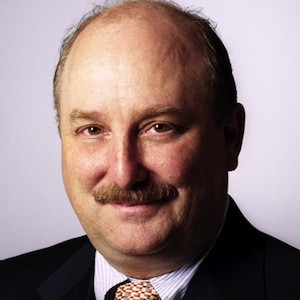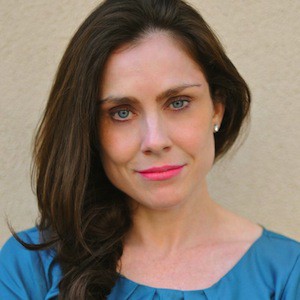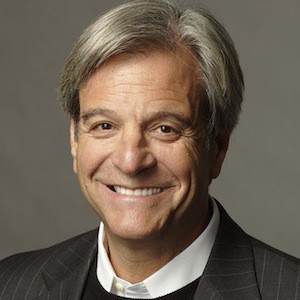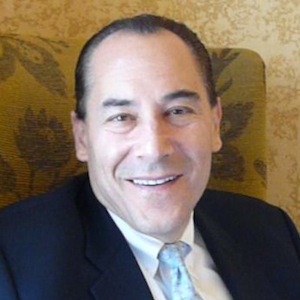Martin Nisenholtz: This is an oral history so that’s the best place to start. I’ll cast you back to my job interview.
Arthur Sulzberger: I remember your job interview so well.
Martin: You said two things at that interview that have always stuck with me. The first is that the Times isn’t in the newspaper business and that you had an agnostic view of delivery. It didn’t matter whether it was electronic or…I think you used the word “mind melding” at the time.
Arthur: Indeed. This is, being a Star Trek fan, I use that as my kicker.
Martin: This was obviously early 1995 so nobody could imagine what was going to happen or few people could imagine what was going to happen with the web at that point. The other thing you said was that we had just built College Point. You’d just…Actually, no.
Arthur: Edison.
Martin: We’d just built Edison. We had just either bought the land or put the planning in place for College Point. And you said, “This is most certainly the last printing plant I’ll ever build.” I just thought that was an interesting place to start, because clearly, we’re now in early ’95, you’re talking…You must have had some inkling that digital journalism was going to be a very meaningful thing prior to that. Can you remember the first point at which you said, “Hey, there’s something to this electronic delivery, and it’s going to really impact me, the Times, et cetera.” Do you have any recollection of that?
Arthur: I don’t remember what happened that caused me to say there’s going to be a shift coming. I don’t remember that singular moment. I do remember that interview that we had with you, where you turned to me, and to Joe Lelyveld, and to Russ Lewis. Was it Russ Lewis?
Martin: Yes, Russ Lewis.
Arthur: And said, “Why? Why do you people want to go digital at all? Why do you care”?
Martin: I was testing at that point.
Arthur: Yes, I know you were. [laughter]
Arthur: I know you were. Maybe, in part, it’s due to my two years as a wire service reporter for the Associated Press. Where we would transmit our information from London, where I was working, and it would go around the world, and it would appear in countries everywhere. I never felt tied to a particular piece of paper. Perhaps that was the beginning of thinking about it more broadly. It was clear that this was going to be the next telegraph, and it was going to change the way people consumed news information. Received and consumed news information.
Martin: I guess I always took this notion of the word agnostic as being mostly a point about delivery. You’ve also often talked about the way it changes journalism, as well.
Arthur: I wasn’t aware of how it was going to change journalism. At that point, it was not on my radar screen at all. The fact of the immediacy of it, I get that part, but not to the degree we have to do it today. I certainly did not get how it would change the competitive framework. Landscape, better word. The fact that the competitors of those times for The New York Times. The LA Times, the Washington Post, the Chicago Tribune, would not be the competitors, in a fundamental sense, that we face today.
Martin: I guess the only one that still is, is The Wall Street Journal.
Arthur: The Wall Street Journal is certainly, that’s right, again because it’s a national and international play. BBC, the FT. I think of print, the FT and The Wall Street Journal would be the two major ones I would put out there. But that it would lead to the full throated blogosphere that we are working in today, the individual. I don’t think I saw that at all.
Martin: I understand that. If we fast forward just a little bit, it’s going to relate to this early history, but throughout the years, you’ve also talked a lot about the nature of authority. I think this is a key thing, because there was… When I joined the company, it’s not that there weren’t other authorities, but they were all very centralized and top down. How do you think this notion of authority has changed in the last 20 years, and do you think it’s a good thing, a bad thing? What’s your view of that?
Arthur: Let’s start by saying, it’s not useful to say, is it a good thing or it’s a bad thing. It exists, and you have to make the best of this changing nature of authority. Do more people have a greater voice in reaching their friends, their colleagues and total strangers? Absolutely. There’s no question about that. But do people still value information that they trust and can trust? Clearly, and I think we’re seeing that. There’s going to continue to be room for authority in this sort of traditional sense of that word. Authority because people check their facts, because they correct their mistakes, they own their errors, and because they can be trusted to bring a thoughtful conversation into place.
We are working to do that more and more. Better integrating with our own audience. Think of the audience The New York Times content, and how we can better use that audience to build a really robust discussion.
I think both sides of that are true. We (know that fact and rumor) circle the world in a second. Therefore, it’s more critical than it ever has been, to have trusted, verified information out there.
Martin: Back to the mid ’90s just briefly. I joined the company, and…
Arthur: We’re all grateful.
Martin: Thank you. We made a recommendation that was somewhat controversial at the time, although we made it in the context of other folks having made the same decision, to offer the website for free. Many people have said that this was a good decision. Many people have said this was a terrible decision.
There are people, in fact people who we’ve interviewed, that are on both sides of that. I just wanted to get your thoughts in retrospect. Do you think it was the right decision, honestly, to offer the Times on the Web for free? At that time?
Arthur: The answer is, absolutely I do. I do for a couple of different reasons. The first is, we didn’t know what the business model was going to be. It was so early in that system. To see what kind of audience we could build, what kind of tools we needed. At a time when this was a highly profitable newspaper and company, because of its print heritage was, I think, correct.
Two, I think by offering it free, we found it easier to engage our journalists in building the digital muscles that we needed to really make this work. Because, as you recall, the newsroom embraced it in theory but not really in their heart, because it got…
Newsrooms, as you know, are mission driven organizations. They saw this in the early stages as getting in the way of the mission. The mission was getting the best quality information into the hands, literally, of people who were holding paper. But once they started to see what kind of reach they could get, once they started to get feedback from people living outside of the United States who had read their stories on this thing called the web, they started to say, “Wait this is core to the mission.”
I think it would have been a harder sale, had there been an element of charging for it, in making that transition. What do you think?
Martin: I don’t want to editorialize too much here, but I absolutely think it was the right decision. But [what] I would say is this, Arthur. We entered into this with the view of experimentation. You often used that word. We charged internationally, to begin with. We didn’t like the results of that, so we pulled it back.
Arthur: We charged for opinion and the columnists. We pulled it back.
Martin: There were ongoing experiments, all along, in terms of charging. My view had always been that, if we built really big, loyal audience, we would be able to convert them when the product was at the point where they were ready to pay. That turned out to be true. It’s funny, because the Journal took a different course and we’ve ended up… Some of their content is now free. Some of our content is now free. A lot of it is paid. We’ve ended up in much the same place, from a business model perspective, almost 20 years later. That’s an interesting footnote.
Paul Sagan: Can I interject?
Martin: Of course.
Paul: We played with these metaphors of swimmers and tide. The swimmers were everybody in the business. The Times was in the business. The Journal was in the business. The tide were some of these other events that were going on. Some were completely [inaudible 11:38 orthogonal] . Craigslist didn’t wake up trying to be…Even an advertising business had a huge impact on some aspect. Then there were other things, like Reuters. For the first time, basically releasing their wires into the wild, if you will, through Yahoo right around the same time. Giving the audience access not just to free content, free news, but in a different way which was more than they ever had before and sorted. I’m wondering how much you thought about that, and those other things that were going on at the same time?
Either informed the decision or you thought were unimportant, or thought, “This is going into some big stew and we don’t really know what it’s going to taste like when it’s over.”
Arthur: There was so much happening out there, as I recall. We were working, first, in the earliest stages, with AOL. We were finding ways to do partnerships. There was so much going on that nobody really knew what was around that next corner. I don’t think anyone really understood what Craigslist was going to do to the newspaper industry. Less effect on The New York Times, because that’s not been a dominant advertising area for us. But classifieds, for most newspapers, were 60 percent. This is one of those situations where you just couldn’t see clearly around corners. That meant, to change the metaphor from the swimmer and the tide that we had to find a way to stay balanced in a canoe going down a very fast, tough river.
Being able to test and learn, to Martin’s good point, meant being willing to try to all paddle in one direction. And then all paddle back in another direction. That was a hard part. It meant having a more unified approach than most news organizations were comfortable doing.
Martin: I want to probe the next step which was that there was an acceleration, once Netscape went public and the dot com boom went underway, there was a clear recognition that something very big was happening. We didn’t quite know what it was. At that time, we took a very controversial decision. It was a wrenching decision, in some ways, to create NYTD. And break out the organization which had been reporting to the New York Times and the Boston Globe, respectively, into this new unit. Can you talk about your thinking about that, at all?
Arthur: The thinking behind breaking our digital arm out, from the rest of the organization, was tied to the thought that we were not quick enough at innovation and that we needed to separate these organizations, to give the digital arm the ability to make faster decisions, to test and learn, in a way that was outside of the Times brand, to a certain degree. It wouldn’t have quite the same impact. I’m not sure that we got to that spot that we were going for. But it did allow for us more speedy maneuvering, in creating our digital operation. What do you think?
Martin: By getting to that spot, if you mean we didn’t actually take the company public, which is what we had intended to do, that’s true.
Arthur: When we created NYTD, it was not about taking the company public. That came later. That evolved later. The initial decision was, faster decision making, more autonomy, less command and control. Does that sound right to you?
Martin: That sounds exactly right.
Arthur: That was the thought and it’s not a bad thought.
Martin: No. I think it was exactly the right thing to do at that time.
Arthur: We experimented more. We learned more. Then we came very close to selling, to going public rather. I will say, thank God, we saved ourselves from that. It would have been a very tough place to be. Just as we were on the verge of doing that, the market fell, the bubble burst and we were saved from our own vision.
Martin: But we kept NYTD alive.
Arthur: We kept NYTD alive.
Martin: For another five years.
Arthur: Absolutely. Then integrated it back into the organization. By the time we did that, it was so critical to the state of The New York Times, that the integration was pretty easy to embrace. Do you agree with that?
Martin: I don’t want to skip over a couple of things. In the late ’90s, we did a couple of things that were quite interesting. I just wanted to get your perspective on them and subsequently, what happened with them. The first was the creation of this website called New York Today.
Arthur: Local.
Martin: Yeah. Meant to dominate the largest market in the country. It very quickly grew to do that. It was the largest New York website.
Arthur: We were partnered with who there?
Martin: Elon Musk, the guy that now founded Tesla. He created a business called Zip2. We were partnered with him. He supplied a lot of the underlying database technology that allowed us to offer all sorts of restaurant guides and things like that. That was very helpful. The other thing we did was we bought Abuzz, which was the knowledge management system. Kind of a precursor to companies like Quora, and to some extent, Yahoo Answers. These were two very early moves. I just wanted to get your perspective on them if you have one.
Arthur: Both Abuzz and New York Today, very different. I was more familiar with New York Today, to be honest, than I was with Abuzz. But in retrospect, we will probably agree that we could have done more with Abuzz. That was a missed opportunity on our part. We weren’t as focused on it as we should have been.
Martin: This has got to be kind of a conversation, because we went through this together. I would say it was the single largest mistake that we made, shutting down Abuzz.
Arthur: It may well be. That was at the time the bubble burst.
Martin: That’s what caused it.
Arthur: That’s what caused it. I understand. In retrospect, we should have found a way to put resources. We just didn’t see this core. That was the error. New York Today was a great experiment. We’ve seen many others try to follow in those footsteps, becoming even more and more hyper local. Patch, obviously, being a great example. Some of the work we did with NYU and other journalism schools, to try to create more hyper local parts of NYTimes.com.
Paul: What happened to that site in the end?
Arthur: New York Today just couldn’t sustain itself.
Martin: No, what happened is, the dot com bust happened. We were told we had to get profitable. We had two approaches. We could have gone in…To get profitable, we had to cut 40 percent of our expenses, some way or another. It was all people. Either we could have gone across the board or and just cut… My recommendation and the decision we made, ultimately, was we were going to put all the wood behind NYTimes.com, which, at the end of the day, given the mandate, was the right decision. But you’re talking about, literally, a couple of million dollars a year, Paul, in a company that, at the time, was making $800 million in cash flow. To Arthur’s earlier point, it was just short sighted. But hindsight is always 20/20.
Arthur: In truth, what we’ve learned about our sites, and what we’ve learned about our reach is just it’s not about hyper local for The New York Times. Hyper local is…Others can play that game and should. We can do more than we’re doing in that. Let me not back away from things like Scoop and perhaps investing in other verticals that will meet some of those needs. But our future is international and growing the brand of The New York Times internationally in languages and reach.
Martin: I want to go back, just for another second. Paul mentioned Craigslist. There were a lot of efforts, at that point in time, in the classified business, as well. We were principles in a business called Career Path. I don’t know whether you remember that, but it quickly collapsed under its own weight.
Arthur: As I recall, Career Path was a number of different newspaper companies all banded together. I remember one meeting we had, early on, where our then CFO snidely said something to the entire…About having met with the group, “How can you be wasting your money this way? Am I at the right place?
Martin: Yes, it was the same CFO who…
Arthur: We’re not going to mention her name.
Martin: We won’t mention her name. But when I joined the organization, I wanted to have a three person R&D team attached to the small, 15 or 20 person team that we ultimately built, in order to do stuff that wasn’t just repurposing the paper. She wouldn’t fund that either. There were a variety of things that…
Arthur: Martin, the point about those early years, and even later years, is how challenging it is for a traditional company to find, within itself, the ability to fund long term projects that it doesn’t see a return on in some three to five year window. There’s no question that that has been one of the challenges that we, and so many of our other companies in the journalism world and outside, have faced. You’ve made the point many times that, why did Barnes and Noble not become Amazon? And so many other things. That’s always been the challenge for us. We got better at it. You tried to set up an R&D team very early on and that failed. We did not see the way to fund that in the way we should have. But was it seven years ago, eight years ago that we created the R&D team.
We were late, but at the time, we were still the only newspaper media company that had one, if I’m not mistaken.
Martin: One of the very core, early issues, as I recall, and you were intimately involved with this because it came to a head, was the use of our archive. In fact, the use of our content. We were, at the time, licensing our content to Dow Jones, LexisNexis and others, in a unit that was outside of The New York Times. That unit, when I arrived, basically said, “No, you can’t have access to the content.” Do you remember that?
Arthur: No, I don’t. But I find it amusing and I’m hoping that this story ends with me saying, “Wait, the entire purpose of this is to get our content to people who want to get access to the news, information and opinion of The New York Times.”
Martin: But you had to go to your father to do that? [laughs]
Arthur: That doesn’t surprise me. The challenge has been, for very long, and to a very limited degree still remains, finding that balance between being cannibalized and cannibalizing yourself. We’re now at a point where we recognize that this is the future. Print remains a critical part of what we are. I think print’s going to be around for a lot longer than people, including myself, would have said, five, seven years ago. But it’s not the future. You have to invest in the future. But that wasn’t always the way it was seen back in 1995.
Martin: Paul mentioned the Reuters deal. You have a history with the AP. Eventually, the AP licensed its entire wire to Yahoo and they subsequently developed the largest news website in the world. Still is, in terms of reach. What do you think of that? Do you have any…
Arthur: I must say, I really don’t have an opinion on that. I was a reporter at The Associated Press. I was never on the AP board, though my father was, the way Michael Golden is. I understand they’re under tremendous pressures to adapt and change. They’ve got to do that. But let’s agree that the competitive field has shifted in dramatic ways. Reuters would never have been seen, by a previous generation of leaders here, as a competitor. Now it very much is, Thomson Reuters. Bloomberg, major competitor now. It’s a different world.
Martin: You mentioned Bloomberg. What do you think about that model?
Arthur: What do you mean about that model?
Martin: The idea that you’re subsidizing a news operation off of a very rich other business. It’s a little bit similar to The Washington Post, in Kaplan. Not the same, obviously. Because the information business is very common to Bloomberg, whereas education and The Post are very different.
Arthur: There are going to be a whole variety of different models. Some of them are going to have longer glide paths than others. Bloomberg has one model. ProPublica has another model. Thomson Reuters has a third. We have ours. You’re just going to have to keep on testing and learning. When I came here, roughly 80 percent of our revenue was advertising. 20 percent was circulation. Roughly. It’s now 50/50. Circulation revenue, print and digital is clearly the growth area, as we adapt to the new digital advertising environment order.
[edited]
Martin: Let’s fast forward now to, we’ve integrated the businesses. What we’re beginning to see, in the mid 2000s, is the growth of the aggregation space, particularly, with The Huffington Post starting. Google News. We had this very, to your earlier point, open, free view of the Web. We wanted as many people to be looking at our stuff as possible. We wanted it to travel around the Internet as much as possible. We embraced RSS. We’re the first news organization to do so. The links could go all over the place.
In some ways, as a result of that, these aggregation businesses began to flourish. There are at least two different views of this. Rupert took the view, fairly early on that Google News, and other aggregators were stealing his content. We did not.
In retrospect, looking back eight years, do you think we should have been much more aggressive on the copyright side, and locked it down more, or not?
Arthur: No. I do not think that we should have been more aggressive on the copyright side. I think that we were building a new audience, building a new way of getting our news and information out. Even when we finally moved to a pay model, we moved to it in a way that allowed people to share. We integrated social into the way we were creating the metered model. I think that was important. That was critical. Now, can we, The New York Times, do more in the world of aggregating? Because people trust us, I think, the answer is, absolutely, “Yes.”
We’re now in a place that’s always been a little bit of an issue with our newsroom colleagues, and some in the business, but, mostly, the newsroom. We’re now moving past that.
An hour from now, at the time this interview is happening, we’re going to be announcing some significant changes in the structure of The New York Times company, that are going to feed greater alignment, faster decision making, in conjunction with the business and news operations.
I think you’re going to start to see us begin to do things a little more daring, let’s say that, a little more willingness to try and grow, and learn. Aggregation, we have, perhaps, some thoughts about how we could be better at that.
But, if every morning, and I’m making this up, you knew that Tom Friedman was going to collect the top 10 things that he felt were important for you that day, that would be a pretty interesting list. Or, Andrew Ross Sorkin. Or, so many others.
Martin: That was part of Andrew’s concept in developing DealBook.
Arthur: Exactly. With DealBook.
Martin: It started as an email, in fact.
Arthur: Exactly right.
Martin: There’s this notion of openness. I’ll just ask it in a very direct way. You mentioned a lot of different companies as new competitors, including Bloomberg, and Reuters. We’ve been cooperating, however you want to characterize it, with companies like Twitter, for years.
Arthur: Facebook, and others. Google.
Martin: Mark Zuckerberg referred to the new newsfeed as a newspaper. Dick Costolo, obviously, has a great stake in news in terms of Twitter. How do you view those businesses?
Arthur: Martin Sorrell was exactly right when he coined the phrase, “frenemy”. How long ago was that? Easily, a decade ago.
Martin: No, it was at one of the Zeitgeists, I think.
Paul: A long time ago.
Arthur: A long time ago. In digital terms, Martin, it was a lifetime ago. But, there’s truth there. These are both tools for disseminating our information to an audience that wants and values New York Times journalism, and they’re also a challenge because they have their vision of how to connect people. But we can learn from them. We have built a powerful base, a powerful audience. We’ve got to become better at finding ways of using that audience, connecting that audience to each other.
I’m not suggesting we’re going to become Facebook, or Twitter. But, rather, what are the things that we ought to be thinking about doing to make use of the insight, the knowledge that The New York Times audience has, when an event occurs? I think that’s a fascinating next step for us.
Martin: You just talked about the reorg. What do you think will happen as a result of this? In other words, what’s your hope going forward? Is it that we become more international?
Arthur: The growth of, The New York Times, is going to be, certainly, in the international sphere, there’s no question about that. As you know, we started our first foreign language, non English language website in China. At the moment, it’s blocked, because of our journalism, but, that’s happened in the past. You remember, we were blocked in 2001, and I had to fly to China to get them to open it again.
But, there’s a real future for us there. We’re rebranding, The International Herald Tribune. In a few months, we’ll rebrand it, The International New York Times. We’ll be growing, internationally, under one brand.
Video is a critical part of our future, I think. We’ve just hired a woman to become our new video head. She came from AOL, from, The Huffington Post, if I’m not mistaken.
Martin: AOL. The Huffington Post part of AOL.
Arthur: That’s what I mean. We’ve got some real opportunities there.
[edited]
Arthur: Let’s go back a little bit. As you think about where The New York Times is going to grow in the future, you’re thinking about international, you’re thinking about video, you’re thinking about social, and you’re thinking about mobile. Those are the four areas that we have isolated. Because the mobile reading experience is dramatically different from the traditional screen experience, and, we have to think about what new products we can create that are more easy for a handheld device like the iPhone, not the iPad.
Martin: I know that you’ve announced that The Globe, is up for sale. I don’t expect you to comment on that, at all.
Arthur: In The Globe, we’re happy to…
Paul: We can cut a deal, today. Broadcast. [laughter]
Martin: I would love for you to comment on the state of more localized journalism, and the fact that A, Warren Buffett has been very bullish, and was very bullish in his last letter to shareholders, on the small newspapers. I’m talking about the community space.
Arthur: I totally get it. People have been putting the newspaper industry into one bucket, and, I think that’s unfair. The challenges and the opportunities that a national/international brand, like The New York Times faces, are very different than the challenges and opportunities that a metro daily, like, The Washington Post, The Boston Globe, The LA Times, has.
Very different, yet, again, are the truly small, local, local papers, The Topeka Capital Journal. Each one of those categories is going to have to find the answers. But, they’re not going to be the same answers. There will be similarities. There will be significant differences.
Martin: Do you think that these companies, including The Times, can sustain the level of newsroom heft that they have in the past?
Arthur: I can’t speak for those others, because I’m not close enough to them. But for The Times, absolutely. It’s core to who we are. It’s core to our future. We’ve been through many challenges, and many changes, and there are more ahead. But at The New York Times, right now, we have more national bureaus than ever in our history, and more international bureaus than ever in our history, at a time when a wonderful, powerful paper like The Washington Post has no national bureaus. It’s a very tough, and different place.
Our brand promise is based on quality journalism with a broad reach, international, but more than that, science, culture, food, and dining. We have to find ways to support that brand promise, and move it, more and more, into the digital future. I’m very bullish on this, because I think that you’re seeing us do that.
Martin: Paul, do you have any questions?
Paul: One or two. Crystal ball gazing is always tough.
Arthur: Yes, I’ve learned not to do that, in painful ways.
Paul: It’s painful. There’s clearly a future that’s going to get determined by some of these big, call them Internet players. We’re talking about Google, Facebook. The big news organizations you mentioned, News Corp., Bloomberg. Reuters tops it.
Arthur: When you say, News Corp., do you mean News Corp. one, or News Corp. two?
Paul: I’m not sure if one is newspapers or two is newspapers. But that would help. That would change their competitive dynamic for sure, not being one company with the resources that come from that. But, there are also a number of emerging smaller players who have a different view of scale, and how big they have to be to be significant. Huff Po is, certainly one. We were at, Business Insider, yesterday, which has got a different view. They don’t think that they need to be as big as any of those others to be relevant, in terms of audience, or, to have an effective business model. They have a different view of return, scale, overhead.
I’m just wondering, how you think those other players will affect the audience’s view of news, and how you, and others, will have to react?
Arthur: I’ve learned that the greatest challenge that a company, like ours, faces is not locking in on an answer too soon, and staying flexible. We’ve seen some competitors that have succeeded very well. We’ve seen many competitors that have tried in the digital space, and are now more or less gone. I recognize that there are digital competitors that see their mission in a certain way that doesn’t match the way that we see our mission. They’re more local. Or, they’re more vertical.
We have to do some of that. There’s no question that we need to do some of that. But, our mission is different in a fundamental way. The breadth of our coverage has to be broad. It just has to be broad.
We have to recognize that we’re going to be covering stories that people aren’t going to be coming to in droves, because that’s our mission. We are going to have people on the ground in Iraq and Afghanistan. If people don’t come to that in droves, that’s not why we’re there.
But, we also need to have the columnists, and the stories that have much, broader, broader impact and reach.
Martin: Paul brought up, Business Insider. One of the things that Henry Blodget said about Iraq, and, I just love your view of this, is that there are bloggers, tweeters, all sorts of people, on the ground in Iraq, who are, in a sense, reporting from there.
Arthur: Who are commenting from there. That’s the challenge. How many of those bloggers and tweeters on the ground, in Iraq, are truly independent, truly bring the kind of judgment and fact checking to what they send out? I’m not casting aspersions on any single one of them. But, you and I, both know, how fast false information travels, and how hard it is, sometimes, to find out how false it is. At The Times, that’s our professional duty and responsibility. We make mistakes, Lord knows.
Dick Cheney has got an interview that’s coming out on Showtime.
Martin: It’s a film, actually.
Arthur: It’s a film. In the interview, he still says that there were weapons of mass destruction in Iraq. He’s still convinced that they were there. We, of course, made some errors in our journalism. But, we owned them, and we corrected them. I think that builds trust. We are a human institution, therefore, we are fallible. But, the trust comes from the fact that when we realize we’ve made a mistake, we go out of our way to say so, and to correct it. That’s not true with so many people on the ground, who are not tied to the same journalistic standards, and have, sometimes, their own issue.
Paul: I have a question about audience. My last question, I think.
Martin: Can I follow up on this one?
Paul: Go ahead.
Martin: By the way, Henry’s, clearly, not the only one. There are many, many people who believe that so called, citizen journalism is…
Arthur: Absolutely. There’s a great role for that. I’m not trying to denigrate that across a spectrum. I’m just trying to say that, sometimes, it’s a big challenge to find out who are those people whom you can, actually, trust.
Martin: There’s also an analytical point, as well. There’s a news analysis issue that, sometimes, can’t be served, or, isn’t often served. Anyway, what was your point?
Paul: It’s just a thought about, since, we’re really all here to serve audiences. We’re not doing it for its own sake. We’re trying to reach people with information that’s relevant.
Arthur: Trying to serve democracy.
Paul: Absolutely. This community has come together, at least, vertically, in North America, as a democracy, in the United States. For a long time, this notion of gatekeeper was central, because the means of distribution were so challenging, whether it was newspaper, plant, or, TV and license. People came together in this aggregate. Read the paper in the morning, watch Walter Cronkite at night.
The Internet blew that part up, into this mass fragmentation that you still see, as a rule, on television. There might be 500 channels, but, each person picks 8 or 10.
Arthur: Yes, that’s right.
Paul: You see the same thing happening on the Web, in some sense. People have 10 or 15 [sites] that they go to, and the rest are random, that they hit on searches. If you buy into it, that will probably continue. Because the one thing people don’t have, is infinite time. They need the world well organized. How do you think that affects the evolution, both for The Times, and others, thinking about doing journalism online and reaching people who, even if we multi task, we still only have 24 hours in a day?
Arthur: I’d like to speak for The Times because I feel that what I know, is what I understand. It comes down to maintaining the brand promise, for us. Maintaining it, as the world is speeding up. But the brand promise is quality journalism. Quality. An opinion that is thoughtful. Not always that you agree with, but, that it’s thoughtful, opens your eyes to a different points of view. The joy of this time we’re in.
The joy of this time is that instead of at seven o’clock turning on a TV show to see what’s happening in the world, you just go to your iPad, go to NYTimes.com, and you’ll have a totally, different experience, than you had at five o’clock, six o’clock, seven o’clock in the morning. Totally different.
That 24 hour news cycle continues. But, we are moving along with it now. We’ve got to get better at that. We’ve got to integrate video into that. We need to integrate our audience, in different ways, into that.
But, you’re right. People are going to continue to go to sources. There may be 10,000 different sites you could get some degree of news and information from. But, that’s not the competition.
Martin: I just want to follow up on that for just a moment. You’ve painted a very, very easy to understand vision here, which is that quality journalism, because it’s rare, will lead to more subscribers who will pay.
Arthur: If we give them a quality experience.
Martin: I’ve got it. The advertising business is not a great business anymore, online, certainly. That could change. It’s been up and down for years. We don’t want to say it’s never going to. But, let’s just assume that more and more people are going to be paying, and, so far, the metered model is something that people seem to be paying for. This is a longer term question, Arthur. It seems to me that some of this is generational. The question is, how do you get younger people, to appreciate what you’ve just outlined? Clearly, Baby Boomers, and, maybe even, the next generation behind them, grew up reading printed products.
Arthur: The Millenials.
Martin: The Millenials.
Arthur: Growing the future audience of The New York Times, is a critical issue for us. We have a number of ideas. But, let’s start with the truth. The New York Times has never been a paper that 20 year olds go to, naturally. Are we the most read paper on college campuses? Yes, we are, in the United States. But, in truth, people come to The Times, generally speaking, when their life moves to a different phase.
When they get married, and they have a job, and they have a kid going to school, and all of a sudden they’re integrating into the world in a much more full way. Then the need for the kind of quality information we have becomes, I think, a little more highlighted.
That said, are there products that we could be creating for our Web audience that might be more attractive to a younger audience then our current products are? I think that’s worth testing. I think there are things we could be doing in that arena to learn from.
Because, absolutely right, we need to continue to evolve, and continue to give the kind of robust experience to people who want the kind of quality news information we provide. We’ve never been the biggest newspaper. We were never the biggest newspaper in New York, in terms of circulation, ever.
Martin: We were the biggest newspaper on the Web for a very long time.
Arthur: We were on the Web, that’s right. Because our reach, and that’s clearly more and more of what our future is going to be. But it’s the quality of the audience that is really the important thing, not just the size of the audience. That said, absolutely on our radar screen is, can we be creating products that might be more attractive to a younger audience? That might be getting their information on their iPhones and other handheld devices, mobile devices. Not the iPad, but the real smaller ones. That’s front and center on our…
Martin: But the assumption over time is that people are going to continue to appreciate quality journalism. Without that, there’s really no…
Arthur: If that goes away, then you’re right. Our mission is gone, because that is our mission.
